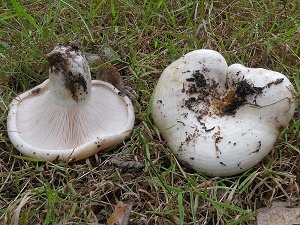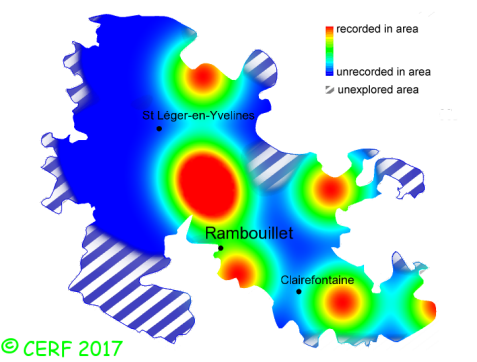| Lactarius controversus Pers.:Fr. |
|
|
|
|
|
|
The cap is white with pink stains. The cap surface is smooth, viscid in wet weather. The stem is white, without ring. The flesh is white, unchanging or turning very slowly yellow when exposed to air; its taste is acrid; the odour is slightly unpleasant; its texture is grainy (breaking like a chalk stick), exuding when cut a white milk, turning slowly yellow. The gills are whitish then pink, decurrent to adnate, crowded . The spore print is white. This species is mycorrhizal. It grows in broad-leaved woods, roadsides, parks, with poplar most of the time (in particular black poplar and aspen), also sometimes with willow, chestnut. The fruiting period takes place from July to November.
Chemical tests : none. Distinctive features : pink gills; large size; white colour Lactarius controversus is quite rare and scattered in the forest of Rambouillet, and is infrequent, more generally speaking . | ||
|
page updated on 14/01/18

